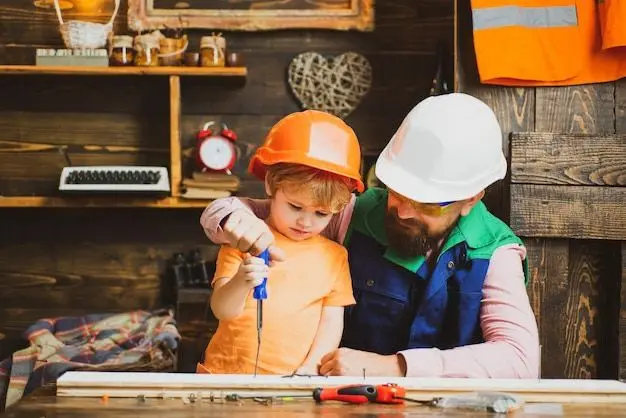Integrated curriculum (STEM, STEAM, STREAM & STEMIE)
Welcome to the Comprehensive Educational Resources designed specifically for Teachers working within an Integrated Curriculum framework.
The integrated curriculum, including STEM, STEAM, STREAM, AND STEMIE, promotes the total growth of a young child. The models stimulate the young learners to think critically, to be problem solvers, and to invent concepts in the real world. The interdisciplinary approach will allow the children to investigate the differences in opinion and will draw parallels between the ideas and solutions by mixing the disciplines. In early childhood, the methodology fosters curiosity and establishes a life-long learning process, teamwork, and flexibility in a complex society (Howard & Mayesky, 2022).
Creativity theories and perspectives
- Ken Robinson’s creativity theory advocacy: It pays tribute to the significance of developing and encouraging creativity via interdisciplinary, student-oriented learning (Nolan & Raban, 2024).
- Howard Gardner’s multiple intelligences: It promotes the various fields, like art, science, etc, to meet the various strengths of the children.
- Jean Piaget’s constructivist theory: he is concerned with the learning of children using practical actions and active exploration, which is instrumental in subject-unification learning.
Resources, materials, and digital technologies
- Resources and materials: loose parts for construction, art supplies for creative imagination, measuring rulers, protractors, calculators, magnifying glasses, and books with science and math stories.
- Digital technologies: digital drawing pad, digital microscopes, coding.
Learning experiences by age group
- 0 to 2 years
- Texture and sound discovery: children will get acquainted with various materials with different textures and sounds, e.g., foil, wood, and fabric. It mixes them randomly in containers, mixing and pressing. It enables experimentation on the senses.
- Shadow and light play: children are allowed to play with translucent coloured objects and torches. They observe the motion of light on surfaces, becoming scientists early because they develop the art of observation and imagination. The political commentary describes that democracy can only benefit humans and not any other living organism (Nolan and Raban, 2024).
- 2 to 3 years
- Miniature builders: involves giving children a variety of stacked objects, such as cups and boxes, among others. Tell children to construct buildings and modify them. It mainly deals with shape, balancing, and using space.
- Steam water wall: outside, children explore the roll-down in tubes and funnels, gravity, and containers. This is where innovation comes in.
- 3 to 5 years
- Rainbow bridge challenge: ask children to build a bridge using recycled materials that can hold small toy animals. They will design, test, decorate, and improve together. It allows for problem-solving, teamwork, and artistic expression.
- The challenges of nature engineering: children build homes for animals out of sticks, clay, and leaves. They specify options and equip the test with a wind (fan). Facilitates design thinking and solving of problems.
- 6 to 8 years
- Code a story: children are supported to create a story with the help of coding tools and incorporate illustration, animation, and voiceovers into it. It majors in literacy, digital design, and sequence.
- Construct a smart city: children create the models of green cities, combining sources of energy, transport, and housing. They depict rectifications through the use of recycled products and computer sketches.
Original Creative Learning Opportunities
- Shadow and light play: children can play with translucent-coloured shapes, torches, and other reflective surfaces in a darkened space and experience the sense of light and shadow. In the process of manipulating the light sources, they see the results of such manipulation in the form of shadow, and this brings about sensory curiosity and early scientific experiments. This has a practical bearing on fostering visual tracking, hand-vegetable coordination, and rudimentary cognition of cause-and-effect, i.e., start to imagine and make stories of the shadows he/she sees, and naturally, creativity comes. This learning can be supplemented by educators introducing their students to basic knowledge of the sciences by posing open-ended questions. It supports outcome 4 because it encourages sensory exploration in them (AGDE,2022).
- The challenge of nature engineering: during such practical activity, children make miniature animal shelters, made of natural resources (sticks, clay, leaves, stones, etc.). They are stimulated to be more critical of the materials, which will be firm, stable, and weatherproof. After building their shelters, children get to experiment on them by blowing a fan to act like wind and see what their structures can withstand in the environment. It fosters design thinking because children would evaluate what went well, what did not, and how they could make their models better. It encourages creativity and problem solving, and pre-engineering ideas in a playful, nature experiential exploration.
Critical thinking
When I think back on my work as a teacher, I see that I can utilize integrated learning to include more than just academics; I can use it to create meaningful experiences that connect with students and make them more resemble the real world. When I use STEM or STEAM activities, I see how easily children can think like mathematicians, scientists, engineers, and artists. I discovered that by engaging in this kind of cross-disciplinary work, the children increase their creativity, curiosity, and problem-solving skills. However, I am also conscious of the necessity of planning to enable genuine integration, only if possible. My structuring of these experiences is critically examined, especially how I accommodate various learning styles and promote inclusion in all its forms (e.g., STEMIE). After the research, I want to get better at asking questions and make sure that every child’s thoughts and opinions are heard throughout these kinds of imaginative, group projects.

https://pin.it/5TolszhIc
Original Creative Learning Opportunities for Children


